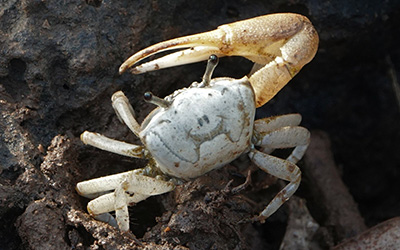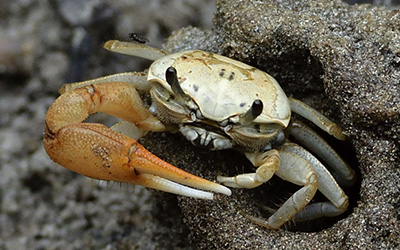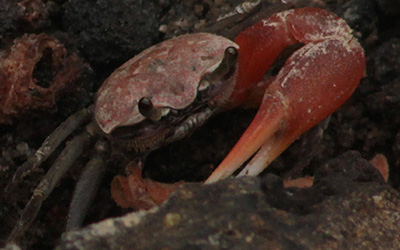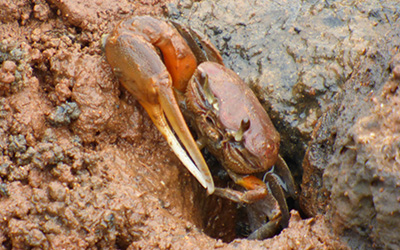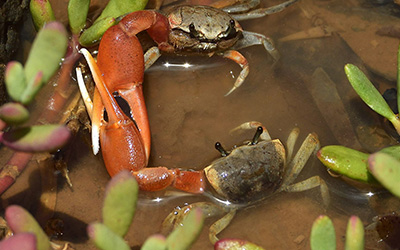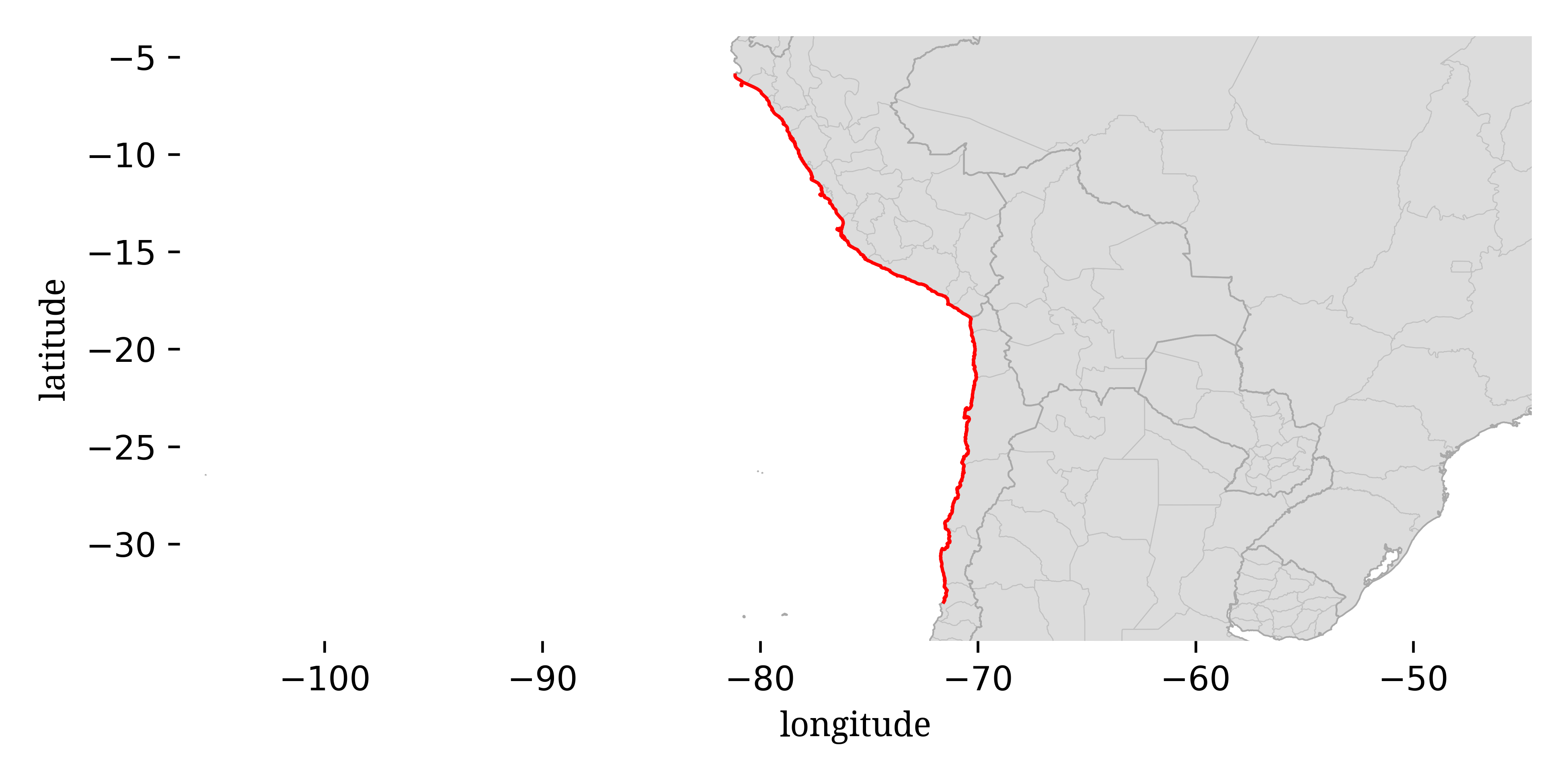
This guide is designed for identification “in the field” where you might be looking at live crabs by eye or through binoculars or from photographs. I will generally try to avoid characters that will require you to physically catch the crab, although I may mention a few for secondary verification. It does not include the more strict taxonomist-style characters that may only be visible under a microscope or via dissection. It is also assumed that the individuals are living, as death (and even capture) can cause dramatic color change.

This is a guide to the fiddler crabs of most of Peru and the nothern part of Chile. Most of the tropical fiddler crabs on the Pacific coast have the southern ends of their range in the very northern part of Peru, around Sechura. South of this point, colder ocean temperatures and generally unsuitable habitats lead to few places for fiddler crabs to settle. Only three species have been found along most of the central and southern Peruvian coast, and only one of those species has been found in Chile (supposedly as far south as Valparaiso).
These three species should be very easy to tell apart. A number of features can be used to distinguish among these species, but a good place to start is to look at the distance between the base of the eyestalks. Fiddler crabs tend to split into two groups, those with the eyestalks very close together (“narrow front”) and those with the eyestalks separated a bit more (“broad front”). One of the species is a narrow front species, while the other two are broad front species.
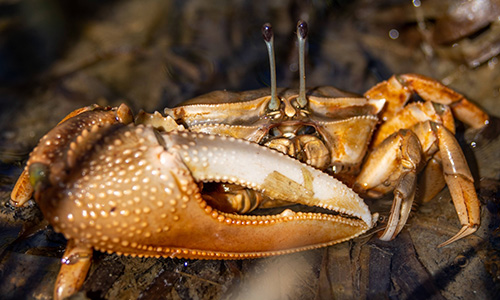
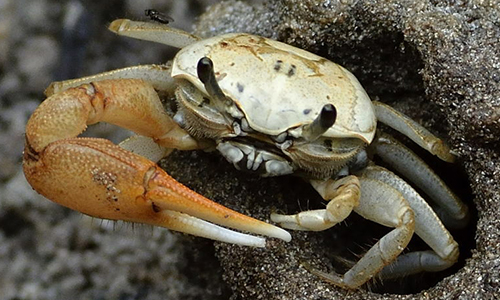
Uca princeps is the only narrow-front species found in this southern region. The most typical colors in this species are pale yellow and orange, with some white. The carapace is typically yellow or fading-to-white, the legs are generally more orange-yellow, and the claw is often a bit brighter orange, with a white movable finger (dactyl).
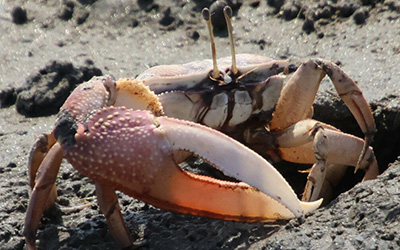

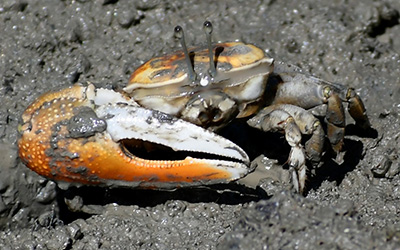
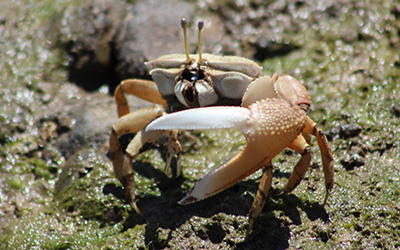
There is a lot of variation beyond this typical pattern. Carapace and legs may darken to a dark orange or even brown; sometimes the orange shifts to more red. In rare cases the carapace can be dark blue, almost black.

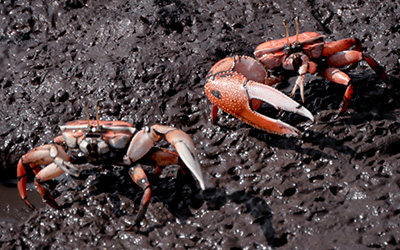
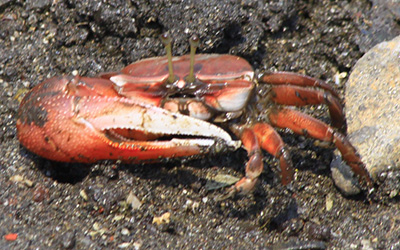
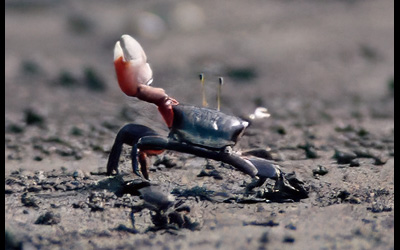
Leptuca stenodactylus is one of the more colorful American species, having a blue and white carapace, bright red legs, and a claw with pink or white. It has been found as far south as Valparaiso, Chile.

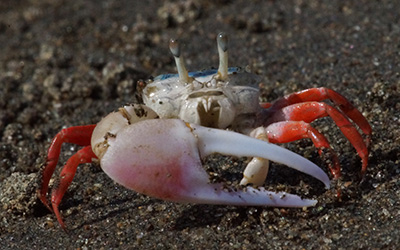
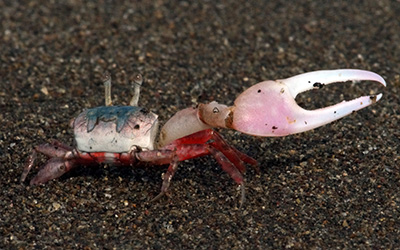
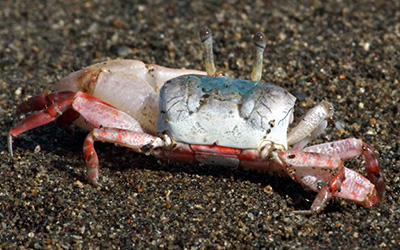

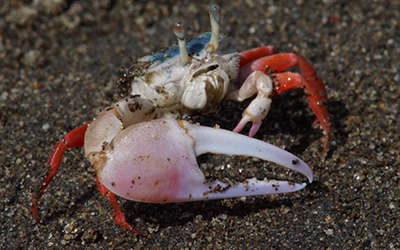
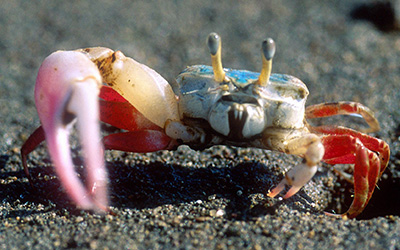
Minuca galapagensis has a much broader front than Leptuca stenodactylus (let alone Uca princeps), and lacks most of the color as it is predominantly white. The “canonical” coloration of this species appears to be a mostly white (or pale beige) body with a more orange claw (sometimes more yellow-orange, sometimes more red-orange). Other individuals may be more dull brown, orange, or a mix.
